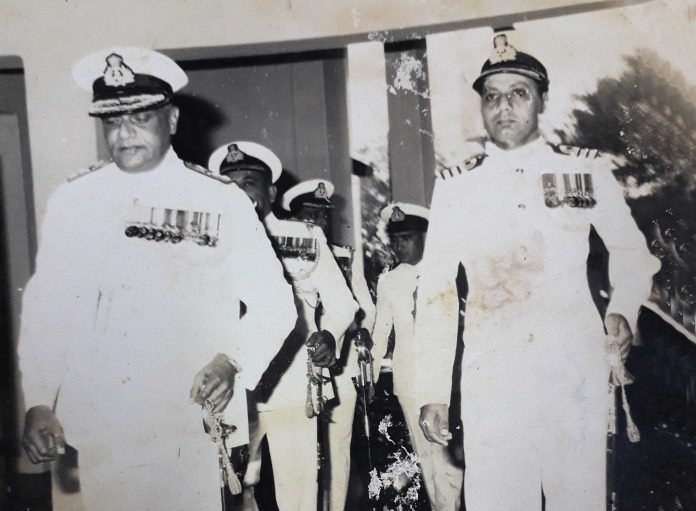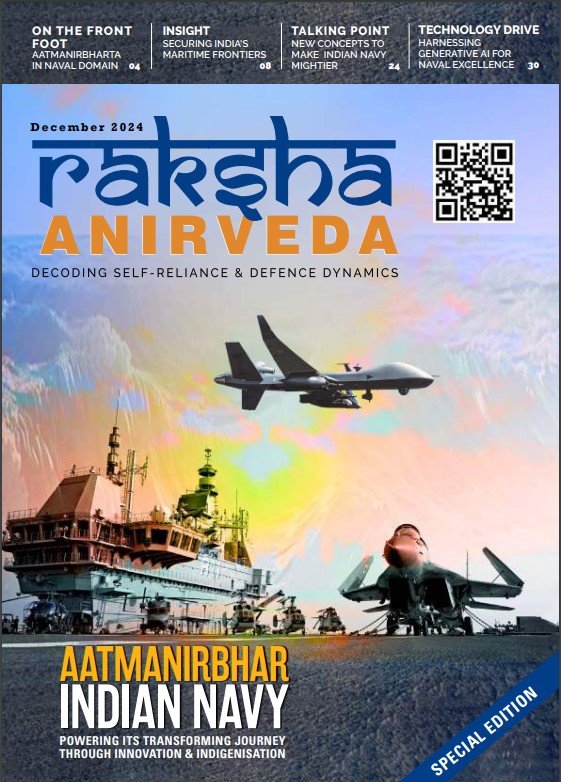The commissioning of three major warships by Prime Minister Narendra Modi at Mumbai’s Naval Dockyard on January 15 marks a significant stride in the Indian Navy’s ongoing journey towards Aatmanirbharta (self-reliance) in defence production. Built by Mazagon Dock Shipbuilders Limited (MDL), these three state-of-the-art platforms are a showcase of indigenous capability—over 75 per cent of their components are sourced from within India, and each was completed within the scheduled timelines. All three vessels have now been inducted into the Western Fleet as frontline combatants.
Indigenous Warship Construction: A Technological Leap Forward
Constructed using 16,000 tonnes of Indian-made steel, the trio includes the 6,800-tonne INS Surat—the fourth and final warship in the Project 15B class of guided-missile destroyers; INS Nilgiri, a 6,400-tonne stealth frigate and the first of seven under Project 17A; and the last of six Scorpène-class submarines, INS Vagsheer. The frigate INS Nilgiri represents a significant upgrade over the earlier Shivalik-class, designed by the Indian Navy’s Directorate of Naval Design. It features the Lanza-NG 3D air surveillance radar, co-developed by Tata Advanced Systems Limited, Spain’s Indra Sistemas, and Italy’s Leonardo, alongside advanced stealth and combat systems.
INS Vagsheer, designed by France’s Naval Group, incorporates the Submarine Tactical Integrated Combat System (SUBTICS) suite and is armed with underwater-launched SM39 Exocet anti-ship missiles and SUT-B torpedoes, currently deployed in a transitional fitment from the Navy’s existing inventory.
INS Surat and INS Nilgiri are globally competitive warships. They feature an upgraded version of the 76mm Super Rapid Gun Mount from Italian defence manufacturer Otobreda, now produced by Bharat Heavy Electricals Limited (BHEL). Both ships are equipped with eight BrahMos supersonic cruise missiles—with a strike range of 750 km—supplied by Bharat Dynamics Limited (BDL), widely regarded as one of the most potent missile systems globally. Air defence is provided by 32 Barak-8 surface-to-air missiles, co-developed by the Defence Research and Development Organisation (DRDO) and Israel Aerospace Industries (IAI).

The Indian Navy’s decision to adopt the EL/M-2248 MF-STAR (Multi-Function Surveillance, Track and Guidance Radar) supplied by Israel’s ELTA Systems Ltd as a standard sensor suite demonstrates forward-thinking procurement. This radar is widely rated superior even to the United States Navy’s AEGIS system in certain aspects. DRDO’s heavyweight torpedoes, the Varunastra, integrated with launchers from Larsen & Toubro, add to the anti-submarine warfare suite. Combat operations are further supported by recently acquired MH-60R Seahawk helicopters for both anti-ship and anti-submarine roles.
Command and control infrastructure aboard these vessels is indigenously developed by the Weapons and Electronics Systems Engineering Establishment (WESEE), with installations carried out by Bharat Electronics Limited (BEL). These systems are backed by satellite communications terminals using the Indian Space Research Organisation’s GSAT-7 and GSAT-8 satellites, along with secure digital links and a full suite of electronic warfare (EW) systems, including receivers and jammers.
The recent commissioning of three indigenous warships marks the beginning of India’s maritime ascent. The Indian Navy is expanding its regional presence with cutting-edge indigenously-built platforms, enhanced logistics, and greater inclusion of women and Agniveers. It is breaking traditions while building formidable new capabilities
The ships’ internal layouts reflect modern naval thinking, with ergonomically designed accommodation for over 300 officers and sailors, including facilities tailored for the growing number of women now serving in the Navy. Onboard systems include advanced technologies such as artificial intelligence (AI), quantum computing applications, and software-defined radios, highlighting the Navy’s embrace of technological modernity.
Nari Shakti and Agniveers: Reshaping the Navy’s Workforce
A key area of transformation lies in the human element of the force. The Navy is aligning with India’s broader push for Nari Shakti (women’s empowerment), particularly in combat and technical domains. A rejuvenated Logistics Branch has emerged as a professional corps populated by graduate-level officers—both men and women. The introduction of the Agnipath scheme has added a fresh dynamic to the naval workforce, with Agniveers—young male and female recruits entering for a four-year term—now undergoing rigorous training and evaluation. Only the top 25 per cent are retained for permanent service, adding a competitive edge that is likely to raise the performance bar across the board.
Traditionally, most naval officers were men between the ages of 16 and 18, inducted through the tri-service National Defence Academy (NDA) at Khadakwasla near Pune—an institution curiously distant from any actual sea exposure. It offered training on an inland lake and a lifestyle shaped heavily by Army protocols. Today, officer training has evolved significantly. The Indian Naval Academy (NAVAC) at Ezhimala, in Kannur district, Kerala, now produces officers with Bachelor of Technology (B Tech) degrees. The Academy’s motto, Vidyayaa Amritam Ashnute, translates to “Through knowledge, one attains immortality”—a fitting mantra for a Navy that is betting on a technologically savvy force.

The Navy’s Logistics Branch, now almost entirely digitised, runs naval messes and recreational institutes along commercial hotel lines, bringing a level of professionalism to service support. Women junior officers have also proven their mettle as administrative aides and secretarial staff to flag-rank officers.
Enlisted sailors—recruited at a similarly young age—receive initial training at INS Chilka in Odisha, where they learn basic seamanship, physical conditioning, swimming, and naval subjects. They are now joined by the well-educated Agniveer recruits, who receive the same orientation and undergo the same standards of discipline and training.
Maritime Diplomacy and Strategic Infrastructure
India’s maritime outreach and regional influence have grown steadily in recent months, guided by high-level engagements and defence diplomacy initiatives. Prime Minister Modi’s visits to neighbouring nations like Mauritius, Sri Lanka, and Thailand have paralleled the Navy’s growing presence in the Indian Ocean Region (IOR). India’s naval strategy is now deeply intertwined with foreign policy, particularly through the lens of “Defence Diplomacy and Exports”, with naval officers embedded in the Ministry of External Affairs (MEA) to coordinate efforts.
The defence budget for 2025-26 has increased by 9.5 per cent, rising to ₹6.8 trillion (approximately USD 75 billion), placing India fourth globally after the United States, China, and Russia. The Indian Navy has emerged as the biggest beneficiary of the capital outlay, allocated ₹57,950 crore—amounting to 41 per cent of the ₹1,40,691.24 crore capital budget. This allocation likely factors in the purchase of 26 Rafale Marine fighter jets. The Indian Air Force receives ₹54,570 crore (39 per cent), while the Indian Army gets ₹27,421 crore (19.5 per cent).
From Combat to Humanitarian Missions
The Navy’s operational tempo has remained consistently high, reflecting its dual role as a combat-ready force and a first responder in regional crises. In early April, Operation Brahma saw Indian naval ships deliver critical aid to Myanmar following a devastating earthquake. The Navy’s participation in Exercise Tiger Triumph (April 1-13) alongside the US Navy underscored its growing interoperability in humanitarian assistance and disaster relief (HADR) operations.
Meanwhile, the Indra-14 naval drills with Russia (March 28-April 2) reaffirmed the long-standing defence partnership between the two nations. On the western front, INS Tarash’s interception of 2,500 kg of narcotics in the Arabian Sea—in coordination with Combined Task Force 150—highlighted the Navy’s role in regional maritime security.

The Navy continues to operate at a high tempo despite its size. It participated in the 14th edition of the bilateral naval exercise Indra with the Russian Navy from 28 March to 2 April in the Bay of Bengal, reaffirming long-standing defence ties. Following a severe earthquake in Myanmar in early April, the Navy rendered humanitarian aid under Operation Brahma. Exercise Tiger Triumph—held from 1 April—saw Indian forces train alongside the United States Navy and Marine Corps in humanitarian assistance and disaster relief (HADR) operations in and around Visakhapatnam. Participating US vessels included the USS Comstock (LSD 45) and the guided-missile destroyer USS Ralph Johnson (DDG 114).
On the western seaboard, INS Sunayna hosted trainees from nine nations in a regional maritime security exercise inaugurated by Defence Minister Rajnath Singh. Around the same time, INS Tarash, operating in coordination with Combined Task Force 150 (CTF 150), intercepted and seized 2,500 kg of narcotics in the Arabian Sea.
From commissioning advanced destroyers and submarines to supporting foreign policy through defence diplomacy and humanitarian missions, the Navy is emerging as a modern, agile and technology-driven maritime force
Beyond Warfare: Soft Power and Symbolism
Prime Minister Modi’s two-day state visit to Mauritius from 11 March 2025, as Chief Guest for the island nation’s 57th National Day, marked a key moment in India’s strategic outreach. India is assisting Mauritius in developing Agalega Island as a strategic facility. An airstrip capable of handling a P-8I maritime patrol aircraft has already been tested. The Indian Navy may also gain future access to the Diego Garcia base—leased by the United States. India’s upgraded vision from SAGAR (Security and Growth for All in the Region) to MAHASAGAR (Mutual and Holistic Advancement for Security and Growth Across Regions) further reflects the evolving nature of India’s maritime ambitions. INS Imphal made her first port call to Port Louis, participating in Mauritius’s National Day celebrations.
The Navy also acknowledges the need for cultural expression and soft power. On 24 March, the Indian Navy Band delivered a stellar symphonic performance at Bharat Mandapam in Pragati Maidan, Delhi. Featuring a fusion of Western classical and Indian music traditions, the concert was described by media outlets as a tribute to India’s cultural mosaic. Defence Minister Rajnath Singh graced the event as Chief Guest.

The Road Ahead
Indigenous shipbuilding is now the Navy’s norm. Of more than 90 ships currently under construction, only one—the Krivak-class frigate INS Tamata (earlier INS Tushil)—is being built abroad at the Yantar Shipyard in Kaliningrad, Russia. Domestically, India has already built two nuclear-powered submarines and an aircraft carrier, underscoring a robust trajectory towards strategic autonomy.
The collective transformation of the Indian Navy—powered by Nari Shakti, the Agniveer scheme, and a revitalised Logistics Branch—is reshaping it into a self-sufficient, technologically advanced force. The recent success of the Navika Sagar Parikrama II (NSP-II) underlines this shift. Two naval women officers—Lieutenant Commander Dilna K and Lieutenant Commander Roopa—completed the fourth and final leg of their global circumnavigation aboard the Indian Naval Sailing Vessel (INSV) Tarini, reaching Cape Town in early April. They are expected to receive a hero’s welcome in Goa.

As the Indian Navy cements its role as the IOR’s preeminent security provider, it must balance combat readiness with diplomatic outreach. Sustaining indigenisation, retaining skilled personnel, and adapting to emerging technologies will be critical in the coming decade. With a mix of modern warships, a diversified workforce, and strategic partnerships, the Navy is poised to play a defining role in India’s rise as a maritime power.
Sam No Varuna—May the Ocean God be with us.
–His latest book is – India and its Navy@2025: A Pictorial Journey; ISBN 9 789381 722343; Sabre and Quill Publishers.
The writer is a naval author and curates a Maritime Museum at C 443 Defence Colony, New Delhi and writes and lectures on maritime issues.






